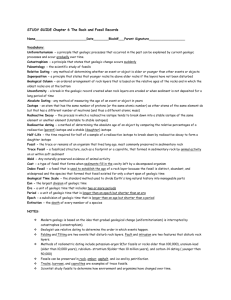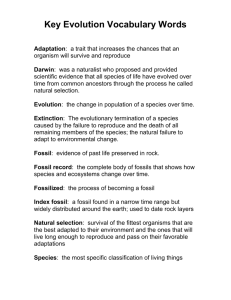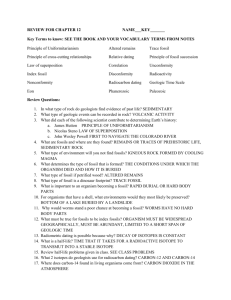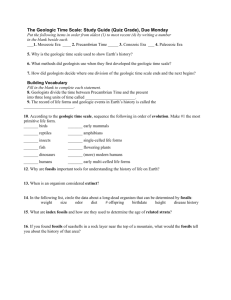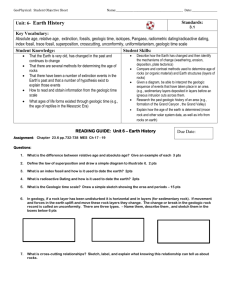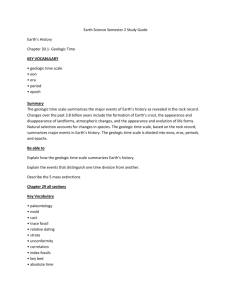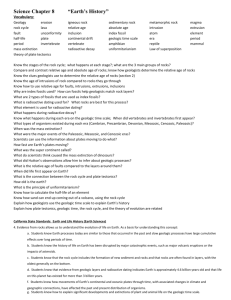Unit Vocabulary
advertisement
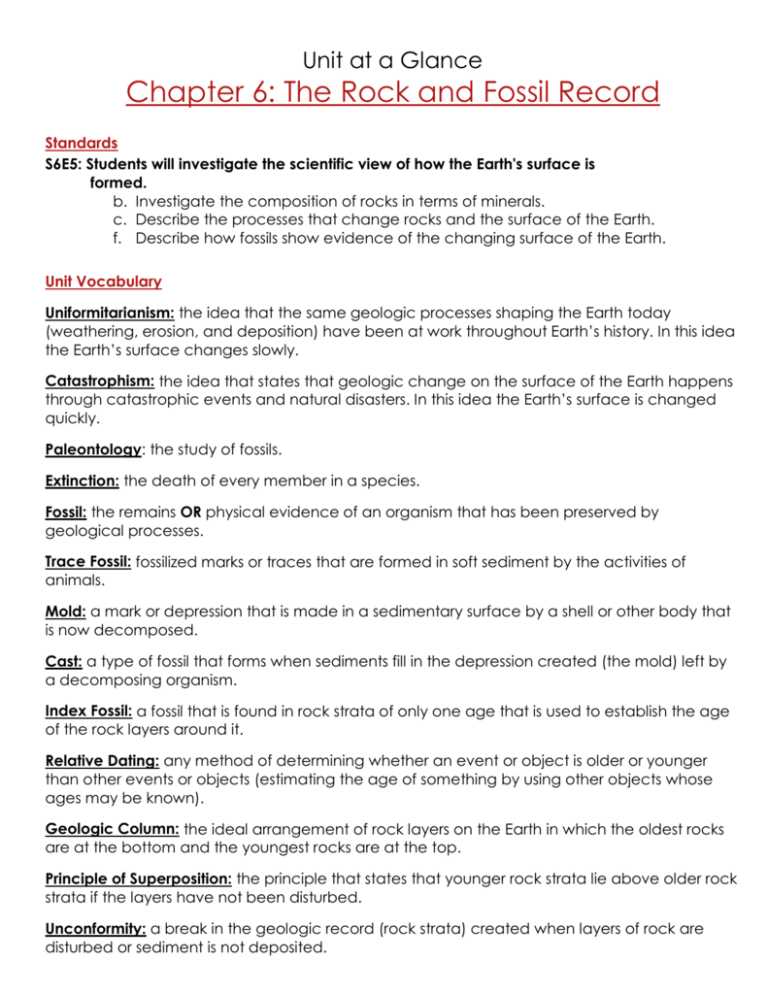
Unit at a Glance Chapter 6: The Rock and Fossil Record Standards S6E5: Students will investigate the scientific view of how the Earth's surface is formed. b. Investigate the composition of rocks in terms of minerals. c. Describe the processes that change rocks and the surface of the Earth. f. Describe how fossils show evidence of the changing surface of the Earth. Unit Vocabulary Uniformitarianism: the idea that the same geologic processes shaping the Earth today (weathering, erosion, and deposition) have been at work throughout Earth’s history. In this idea the Earth’s surface changes slowly. Catastrophism: the idea that states that geologic change on the surface of the Earth happens through catastrophic events and natural disasters. In this idea the Earth’s surface is changed quickly. Paleontology: the study of fossils. Extinction: the death of every member in a species. Fossil: the remains OR physical evidence of an organism that has been preserved by geological processes. Trace Fossil: fossilized marks or traces that are formed in soft sediment by the activities of animals. Mold: a mark or depression that is made in a sedimentary surface by a shell or other body that is now decomposed. Cast: a type of fossil that forms when sediments fill in the depression created (the mold) left by a decomposing organism. Index Fossil: a fossil that is found in rock strata of only one age that is used to establish the age of the rock layers around it. Relative Dating: any method of determining whether an event or object is older or younger than other events or objects (estimating the age of something by using other objects whose ages may be known). Geologic Column: the ideal arrangement of rock layers on the Earth in which the oldest rocks are at the bottom and the youngest rocks are at the top. Principle of Superposition: the principle that states that younger rock strata lie above older rock strata if the layers have not been disturbed. Unconformity: a break in the geologic record (rock strata) created when layers of rock are disturbed or sediment is not deposited. Unit at a Glance Absolute Dating: any method of measuring the exact age of an object or event in years. Radiometric Dating: a method of determining the age of an object by estimating the relative percentages of a radioactive isotope remaining in a sample compared to the percentages of stable isotopes. Isotope: an atom that has the same number of protons as other atoms of the same element, but that has a different number of neutrons making the element radioactive. Half-life: the time needed for HALF of a sample of a radioactive substance to undergo radioactive decay. Geologic Time Scale: the standard method used to divide the Earth’s 4.6 billion year history into manageable parts. Eon: the largest division of geologic time. Era: a smaller unit of geological time that divides eons and that includes two or more periods. Period: the unit of geologic time smaller than an era and into which era are divided. Epoch: the smallest unit of geologic time and a division of the geologic period. Essential Questions What is the difference between How can scientists use the fossils they find Uniformitarianism (Gradualism) and to learn about the Earth’s History? Catastrophism? What theory (Uniformitarianism or How do scientists use relative dating to Catastrophism) do MODERN geologists determine the age of rock strata? support? How many different ways can fossils be How do scientists use absolute dating to made? Explain. determine the age of rock strata?


